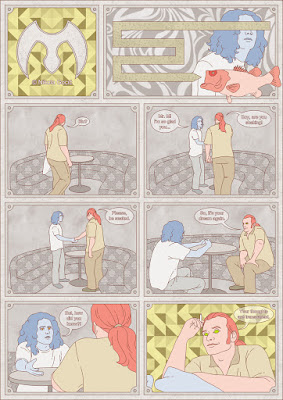Dugometražni prvenac višestruko nagrađivanog holandskog animatora Mišela Dudoka de Vita vizuelni je trijumf, a kako trenutno stoje stvari, i najbolji animirani film 2016. Veličanstvena u svojoj jednostavnosti, ova belgijsko-francusko-japanska koprodukcija rezultat je devetogodišnje posvećenosti koja se ogleda u svakom brižljivo skrojenom frejmu.
Odbacujući dijaloge, de Vit sigurnim i laganim potezima slika arhetipsku priču o ciklusu života i smrti koja deluje kao da postoji od praiskona, a koja se može posmatrati iz najmanje dva ugla. U isti mah, ona je oda ljudskoj istrajnosti i alegorija o turbulentnom odnosu ništavnog čoveka prema ćudljivoj Majci Prirodi ili šire posmatrano, misterioznoj Vasioni.
Usredsređuje se na brodolomnika koga prvi put susrećemo u nezavidnoj situaciji, među divljim i teškim talasima koji prete da zdrobe svaku kost u njegovom telu. Na njegovu sreću, dospeva na obalu pustog ostrva gde započinje (sizifovsku) borbu za goli opstanak sa kojom svako može da se poistoveti. Dok ga pratimo u potrazi za izlazom, uviđamo da su njegovi snovi bliski našim i osećamo gnev prema misterioznoj sili (kako kasnije saznajemo, džinovskoj crvenoj kornjači) koja mu lomi splavove. Nakon osvete junaka, film dobija bajkovitu/mitološku dimenziju koja sa sobom donosi niz novih univerzalnih tema prožetih simbolima čija značenja autor ne nameće, već prepušta gledaocu da ih otkrije.
Kontrastom između znalački iskorišćenog negativnog prostora i likova (protagoniste, 'Venere' koja se rađa iz oklopa mrtvog gmizavca, kao i njihovog sina) čiji dizajn je oslobađen suvišnih detalja, de Vit naglašava monumentalnost okruženja koje, kako u zatišju, tako i tokom bure, oduzima dah. Zelenilo bujne vegetacije, plavetnilo nedoglednog mora, toplina zalaska sunca i srebrom optočene noći stvaraju čistu poeziju u slikama koje, u potpunoj harmoniji sa eteričnom muzičkom pratnjom, pružaju nezaboravan gledalački doživljaj. A neodoljiv retro šarm Crvena kornjača duguje zrnastoj teksturi minimalističkih kompozicija i samoj animaciji koja najčešće odaje utisak da je izvedena kakvom tehnikom majstora starog kova.
Obavijena prozirnim velom melanholije, ova "nema", ali iskrena fantazija je poput moćne tihe vode iz čuvene sprske izreke, a savršen je par podjednako divnoj podvodnoj avanturi De profundis.


















